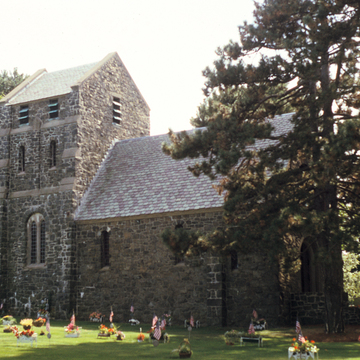Ellingwood Chapel, the centerpiece of this fine rural cemetery, is an excellent example of the restrained Norman Revival manner that Ralph Adams Cram explored in a series of small chapels in the 1910s. Cram sited Ellingwood Chapel at the northern end of Greenlawn Cemetery, originally laid out in 1856–1858 as one of the first municipal projects after Nahant became a separate community in 1853. Luther Scott Johnson provided the funds for the chapel as a memorial to his parents. Emphasizing an architecture of wall
You are here
Ellingwood Chapel, Greenlawn Cemetery
1919–1920, Cram and Ferguson. 195 Nahant Rd.
If SAH Archipedia has been useful to you, please consider supporting it.
SAH Archipedia tells the story of the United States through its buildings, landscapes, and cities. This freely available resource empowers the public with authoritative knowledge that deepens their understanding and appreciation of the built environment. But the Society of Architectural Historians, which created SAH Archipedia with University of Virginia Press, needs your support to maintain the high-caliber research, writing, photography, cartography, editing, design, and programming that make SAH Archipedia a trusted online resource available to all who value the history of place, heritage tourism, and learning.















